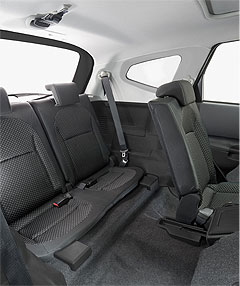No dual-model Dualis strategy for Australia
BY TERRY MARTIN | 9th Apr 2008

Known overseas as the Qashquai+2 – the +2 denoting the extra two seats – the European-engineered and British-built SUV is due for release overseas in October and is designed to appeal to customers who want triple-row seating but feel ambivalent about people-movers and traditional large 4WD wagons.
Given Nissan’s reliance on the latter in Australia, and the general lack of consumer interest in small-medium MPVs, it comes as little surprise that the Japanese car-maker’s Australian arm is itself ambivalent about a dual-model strategy for Dualis Down Under.
A Nissan Australia spokesperson told GoAuto this week that the Dualis seven-seater’s small stature made it no threat to Pathfinder or other members of its 4WD stable, and that the main issue concerned the lack of demand for compact people-movers in Australia compared to Europe.
“It’s not something we think customers are after in Australia,” he said.
Compared to the five-seat Dualis sold in Australia, the seven-seat version rests on a 135mm-longer wheelbase – now out to 2765mm – and increases overall length 211mm to 4526mm. The roofline has also been lengthened and reprofiled at the rear end, adding 38mm to the overall height (to 1643mm).
The tape measure also shows that headroom increases in the front and centre row – by 16mm and 10mm respectively – while an extra 23mm in kneeroom is liberated in the middle row.

In practical terms, the new rear doors are said to improve access to the passenger compartment. The centre bench seat now slides fore and aft (over a 100mm track) to provide walk-in access to the third row, and features a 40/20/40 split-fold function and a higher degree of recline. The five-seat version has a fixed bench with a 60/40 split-fold.
There are other useful features such as the centre “20” portion doubling as an armrest and incorporating cupholders for the third row and a lidded storage box. It also has an integrated power outlet.
The third row is split 50/50 and is deemed suitable for children or as an “occasional” seat for adults up to about 160cm tall. Each portion can be folded into the floor individually by pulling on a strap, and does not require headrests to be removed first.
When folded the luggage volume extends to almost 500 litres, which is 90 litres more than in the five-seat Dualis. At the far end, the loading height has been reduced 13mm to 770mm, while the opening width is no less than 224mm wider.
Nissan’s interior designers have created a “full depth” retractable tonneau cover, which can be removed and stowed in an under-floor compartment.
No substantial engineering changes were made to the lengthened version, despite the bigger dimensions and the addition of around 100kg to the kerb weight. Suspension settings have been modified to account for the extra kilos and the steering assistance has also been retuned.
“The seven-seat Qashqai+2 (arrives) to add a new dimension to the range, and to ensure Nissan continues to offer something no other manufacturer in the market segment can match,” said Nissan Europe senior vice-president of sales and marketing Simon Thomas.
For Australia, however, that does not count for much.
Read more:
First Oz drive: Dualis puts X in the cityRead GoAuto's drive impressions of the Nissan Dualis range
Read GoAuto's road test of the Nissan Dualis Ti